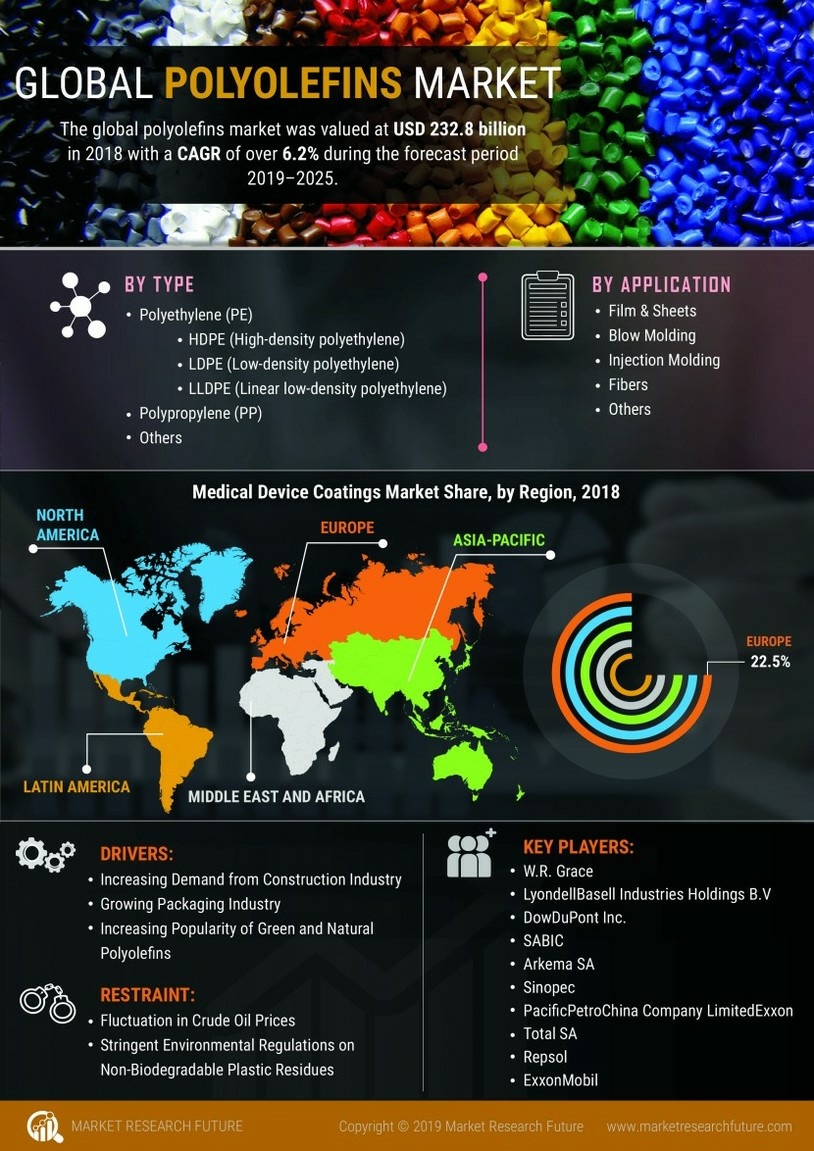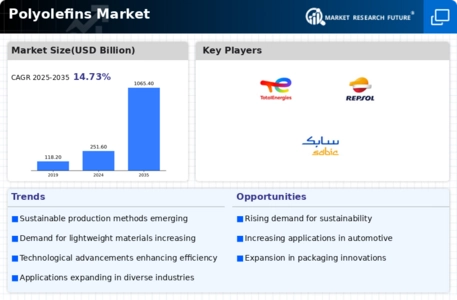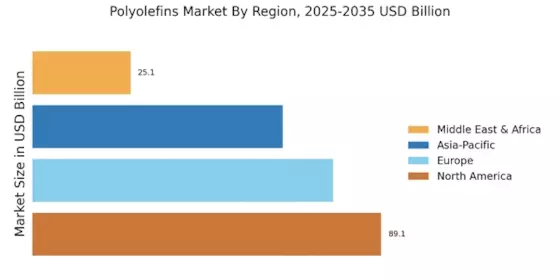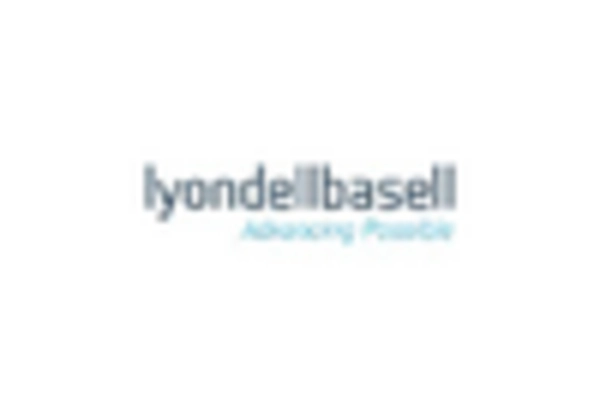Expansion of End-Use Industries
The Polyolefins Market is witnessing expansion across various end-use industries, including consumer goods, textiles, and healthcare. The versatility of polyolefins allows for their application in a wide range of products, from household items to medical devices. In 2025, it is estimated that the consumer goods sector will account for approximately 25% of the total polyolefins demand, driven by the increasing production of durable and lightweight products. Furthermore, the healthcare industry is increasingly utilizing polyolefins for packaging and medical applications due to their biocompatibility and ease of sterilization. As end-use industries continue to grow and diversify, the polyolefins market is likely to experience sustained demand, fostering innovation and development in material applications.
Growth in Automotive Applications
The automotive sector significantly influences the Polyolefins Market, as manufacturers increasingly adopt polyolefins for various applications. These materials are utilized in interior and exterior components due to their lightweight nature, which contributes to improved fuel efficiency and reduced emissions. In 2025, the automotive segment is expected to represent approximately 20% of the total polyolefins demand, driven by the ongoing transition towards electric vehicles and the need for lightweight materials. Polypropylene, in particular, is gaining traction for its versatility and cost-effectiveness, making it a preferred choice for automotive parts. As automotive manufacturers continue to innovate and seek materials that enhance performance while adhering to regulatory standards, the polyolefins market is poised for sustained growth in this sector.
Rising Demand in Packaging Sector
The Polyolefins Market experiences a notable surge in demand driven by the packaging sector. As consumer preferences shift towards lightweight and durable materials, polyolefins, particularly polyethylene and polypropylene, are increasingly favored for their excellent barrier properties and recyclability. In 2025, the packaging segment is projected to account for over 40% of the total polyolefins consumption, reflecting a robust growth trajectory. This trend is further supported by the increasing emphasis on sustainable packaging solutions, which aligns with the broader environmental goals of reducing plastic waste. Consequently, manufacturers are investing in innovative polyolefin formulations that enhance performance while minimizing environmental impact. The ongoing evolution in packaging technologies, coupled with the rising demand for convenience products, positions the polyolefins market as a critical player in the packaging landscape.
Increasing Use in Construction Sector
The construction industry is emerging as a significant driver for the Polyolefins Market, with polyolefins being utilized in a variety of applications such as insulation, pipes, and roofing materials. The lightweight and durable characteristics of polyolefins make them ideal for construction projects, where performance and longevity are paramount. In 2025, the construction segment is projected to account for around 15% of the total polyolefins consumption, reflecting a growing trend towards the use of advanced materials in building applications. Additionally, the push for energy-efficient buildings is further propelling the demand for polyolefin-based insulation materials. As the construction sector continues to evolve, the polyolefins market is likely to benefit from increased adoption in innovative building solutions.
Technological Innovations in Production
Technological advancements play a pivotal role in shaping the Polyolefins Market. Innovations in production processes, such as metallocene catalysis and advanced polymerization techniques, are enhancing the quality and performance of polyolefins. These technologies enable the production of high-performance materials with tailored properties, catering to diverse applications across various industries. In 2025, it is anticipated that the introduction of new production technologies will lead to a 15% increase in the efficiency of polyolefin manufacturing. This improvement not only reduces production costs but also minimizes environmental impact, aligning with the industry's sustainability goals. As manufacturers continue to invest in research and development, the polyolefins market is likely to witness a transformation in product offerings, further solidifying its position in the materials landscape.


















Leave a Comment